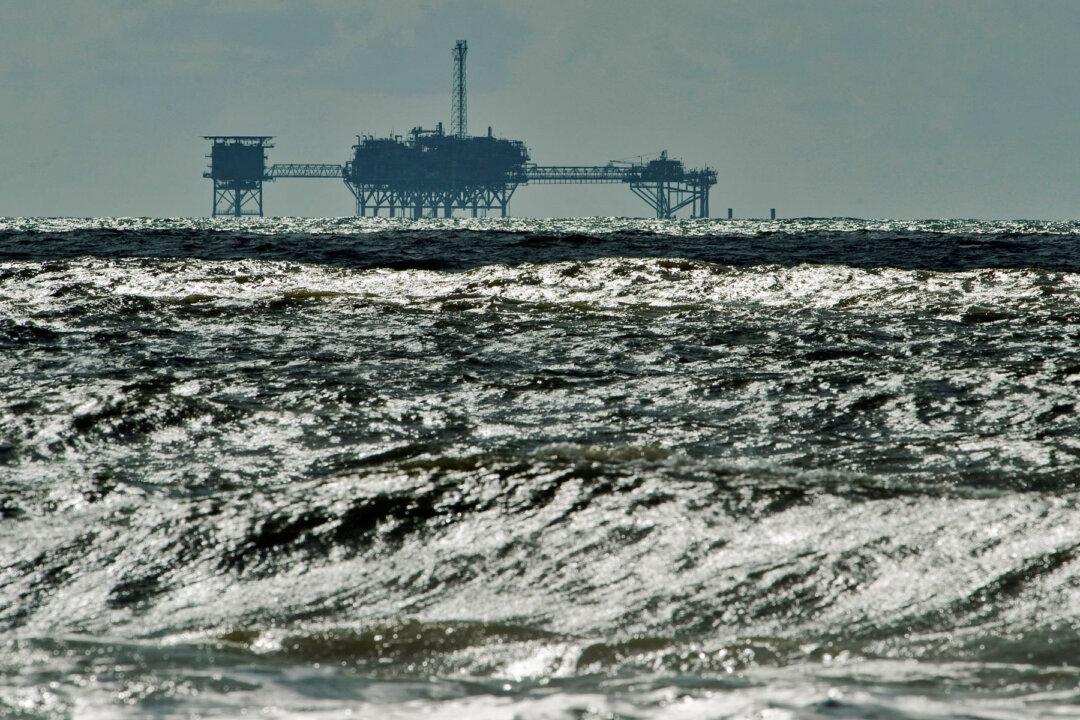Consumer prices excluding the volatile food and energy components soared by 3.1 percent in the year to April, surging past the Federal Reserve’s 2 percent target and reaching levels not seen in nearly 30 years.
The core PCE rise of 3.1 percent in the year to April was above economists’ forecasts of 2.9 percent, with May 1992 being the last time this inflation gauge saw a similar year-over-year vault.
The Fed looks to core PCE as the key inflation gauge that informs its monetary policy, which has an inflation target of a longer-run average of 2 percent. Fed officials have repeatedly said they believe the current bout of inflation is “transitory” and have expressed willingness to see inflation run hot in the short term to achieve the longer-run target and continue to buoy the recovering economy with near-zero interest rates and bond buying program.

Consumer prices as measured by the PCE index including food and energy rose by 3.6 percent in the year to April, after rising 2.4 percent in March, the Commerce Department figures also show. This is the highest level since September 2008, when the PCE index registered a 3.7 percent year-over-year spike.
The surge in inflation reflects pent-up demand as the economy reopens, supply constraints, and technical factors, including the so-called “base effect,” which is the idea that the price index dropped sharply in April 2020 amid pandemic-driven lockdowns, giving the current measure an outsized lift. But some economists have warned for months that big government spending to help the country recover from the pandemic-induced recession could overheat the economy and fuel inflation.
Larry Summers, who served as treasury secretary under President Bill Clinton and director of the National Economic Council under President Barack Obama, recently issued a stark warning that inflation, rather than “excessive slack” in the economy as it bounces back from the pandemic recession, has now become the chief risk.
But the recent stream of economic data, including a sharp rise in the consumer price index, record-high levels of job openings, business hiring difficulties, growing wages, and an economy growing at its fastest pace in decades, strongly suggest that inflation is looming ever larger as the key risk, he argued.
“Now, the primary risk to the U.S. economy is overheating—and inflation,” he argued.
At the same time, preliminary data on long-term inflation expectations from the University of Michigan’s consumer survey spiked in May, reaching the highest level in a decade. The closely followed index shows inflation expectations for the next five years jumped 40 basis points to 3.1 percent from 2.7 percent, marking the largest monthly increase in nearly three decades.
Matthew Luzzetti, chief U.S. economist at Deutsche Bank, said that, while the data is preliminary and prone to revision, the rise could prove to be more sustainable.
“If the rise in inflation expectations continues, and a significant overshoot occurs, it could be a key factor in translating an initially transitory rise in inflation into a more sustained increase,” he wrote in a recent report.
The debate about inflation risk began to build after the Biden administration crafted its $1.9 trillion COVID relief package, which was signed into law in March.
With the increased public debate over inflation, “new anticipatory psychology” has emerged, in which inflation expectations have risen sharply ahead of the actual increase in inflation, according to Luzzetti.
‘Talking About Talking About Tapering’
Inflation concerns and Summers’s warning come as Fed policymakers have begun to acknowledge they are closer to debating when to pull back some of their crisis support for the economy, even as they say it is still needed to bolster the recovery and employment.“We are talking about talking about tapering,” San Francisco Federal Reserve Bank President Mary Daly told CNBC on Tuesday, referring to the potential reduction of the Fed’s $120 billion in monthly asset purchases. Those bond buys, together with near-zero interest rates, are aimed at easing borrowing costs and encouraging hiring and investment.
“I want to make sure that everyone knows that it’s not about doing anything now,” Daly added. She noted that while she is “bullish” about the fall, the economy is still more than 8 million jobs short of where it was before the pandemic, which is still not over. “Right now, policy is in a very good place … we need to be patient.”
This suggestion that talking about tapering could become appropriate is a shift from just a month ago when Chair Jerome Powell said it was “not yet” time to even contemplate having that conversation.
The Fed has promised it won’t raise rates until the economy is back to full employment and it sees inflation reach two percent and poised to rise above that level.
That stance worries some economists, including Summers, who believe the Fed has become too relaxed about inflation and is setting the stage for a painful round of abrupt, inflation-fighting interest rate increases that could also push the economy back into recession.





